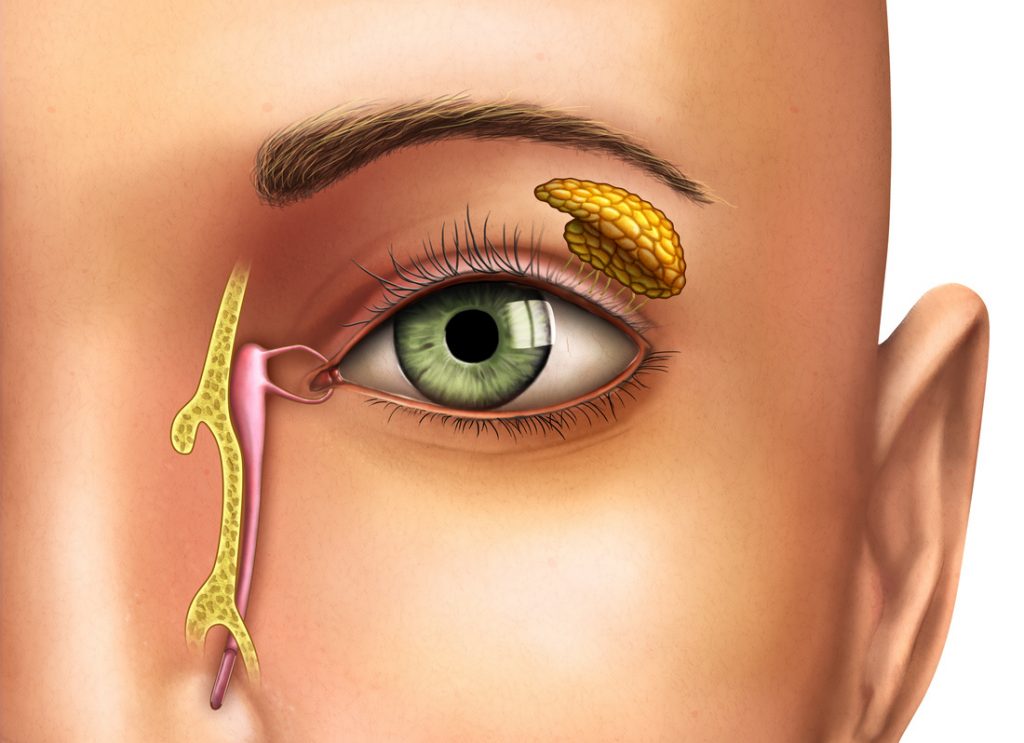
Dry eye
What is dry eye?
When you blink, a film of tears spreads over the eye, making the surface of the eye smooth and clear. Without this tear film, good vision would not be possible.
Sometimes people don’t produce enough tears or the right quality of tears to keep their eyes healthy and comfortable. This condition is known as dry eye.
What are the causes of dry eye?• Exposure to a dry, windy climate, as well as smoke and air conditioning, which can speed tear evaporation.• Because people who work long hours at a computer are less likely to blink often, they are more susceptible to getting dry eye than people who don’t spend a lot of time in front of a computer monitor.• Hormonal changes are a main cause of dry eye. The hormonal changes associated with menopause are one of the main reasons why women are most often affected by dry eye.• Immune diseases (like lupus, rheumatoid arthritis, and Sjögren disease).• Some types of thyroid disease.• Certain conditions that decrease corneal sensation, such as diabetes and herpes zoster.• Long-term contact lens wear.• Some refractive surgeries (such as LASIK).• Preservatives in certain eye drops.• A wide variety of common medicines can cause dry eye. Be sure to tell your eye doctor the names of all the medicines you are taking, especially if you are using:– Diuretics for high blood pressure;– Some medicines for heart or high blood pressure;– Antihistamines for allergies;– Sleeping pills;– Anti-anxiety medicines;– Pain relievers.
Dry eye symptoms• Stinging or burning eyes;• Scratchiness;• Stringy mucus in or around the eyes;• Discomfort when wearing contact lenses.• Excess tearing: It may not sound logical that dry eye would cause excess tearing, but think of it as the eye’s response to discomfort. If the tears responsible for maintaining lubrication do not keep the eye wet enough, the eye becomes irritated. Eye irritation prompts the gland that makes tears to release a large volume of it.• Difficulty keeping your eyes open for very long, especially with reading or watching television.• Excessive eye irritation from smoke or wind.
Dry eye treatment• Eyedrops called (artificial tears) are similar to your own tears. They are available without a prescription, and there are many brands on the market, so you may want to try several to find the one you like best.
Preservative-free eyedrops are available for people who are sensitive to the preservatives
in artificial tears. If you need to use artificial tears more than six times a day,
preservative-free brands may be better for you.• If there is no significant improvement with the use of artificial tears, the next treatment options may include lubricant ointments or gels.• If you are still not noticing any improvement in the symptoms of dry eye with the use of artificial-tears dropsor ointments, or if you are facing problems with their use, your eye doctor may resort to closing the openings of your tear-drainage system either temporarily or permanently. A temporary method of closing these openings may involve the use ofspecial plugs. Your doctor may also choose to permanently close your tear-drainage openings by using heat to seal them closed.This method conserves your own tears and makes artificial tears last longer. • A person with dry eye should avoid anything that may cause dryness, such as an overly warm room, hair dryers or wind. Smoking is especially bothersome.• Some people may find dry-eye relief by supplementing their diet with omega-3 fatty acids, which are found naturally in foods like oily fish (salmon, sardines, anchovies) and flax seeds. Ask your eye doctor if you should take supplements of omega-3 fatty acids and, if so, in what form and dosage.• If other methods do not give you adequate dry-eye relief, your eye doctor may suggest that you use a prescription medicines. One such medicine, cyclosporine, works by stimulating tear production. Steroid eyedrops may also be used, but are generally not recommended for long-term treatment.
If you are bothered by dry eye, talk with your eye doctor for ways to find r

